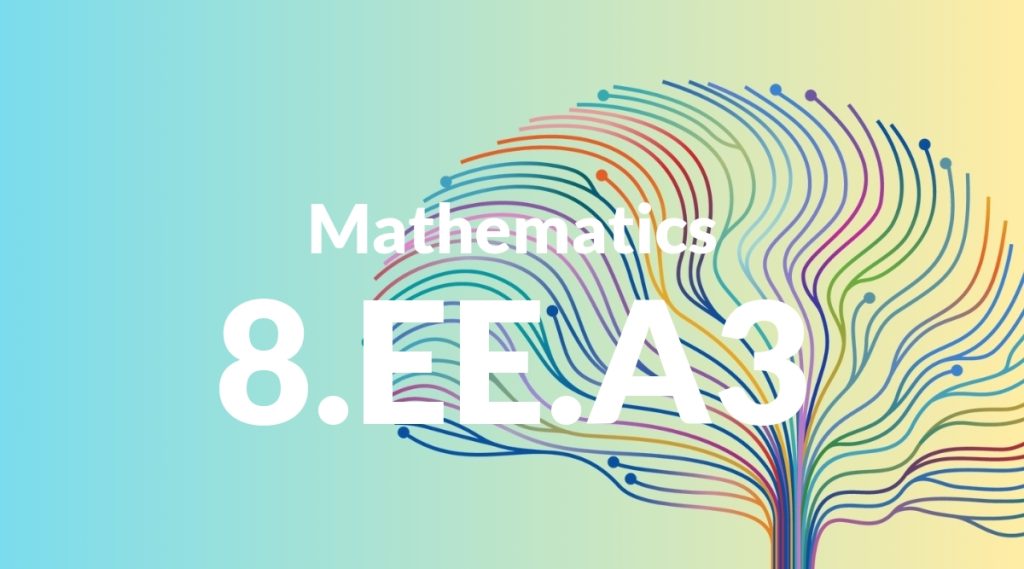Standard: 8.EE.A3 – Use numbers expressed in the form of a single digit times an integer power of 10 to estimate very large or very small quantities, and to express how many times as much one is than the other. For example, estimate the population of the United States as 3 times 10^8 and the population of the world as 7 times 10^9, and determine that the world population is more than 20 times larger.
Grade level: Grade 8
Subject: Mathematics
Domain: Expressions & Equations
Teacher Overview
This standard focuses on using scientific notation to estimate and compare very large or very small quantities. It is crucial for developing students’ abilities to handle real-world data and understand the scale of different quantities. Ensure students have a solid grasp of exponent rules, multiplication, and scientific notation. They should also be comfortable with handling large and small numbers.
After mastering this standard, students will be able to handle more complex algebraic expressions and logarithms, and apply scientific notation in various scientific and real-world contexts.
Common Misconception 1
A common misconception is that multiplying by 10 simply adds 10 to a number. This is incorrect because multiplying by 10 actually shifts the decimal place one position to the right, increasing the number tenfold.
Intervention 1
Use place value charts and visual aids to show how the decimal point moves when multiplying by 10. Provide hands-on activities where students physically move decimal points.
Common Misconception 2
Another misconception is confusing the base and exponent, thinking that 10^3 is the same as 3^10. This misunderstanding can lead to incorrect calculations and interpretations.
Intervention 2
Provide a series of practice problems that emphasize the difference between the base and the exponent. Use real-world examples to illustrate the correct usage and importance of each component.
Prerequisite Knowledge
Students should understand basic exponent rules, multiplication, and scientific notation. They should also be comfortable with large and small numbers and have a foundational understanding of place value.
Subsequent Knowledge
Students will develop skills in more complex algebraic expressions, logarithms, and advanced scientific notation. They will also be able to apply these concepts in various scientific and real-world contexts.
Instructional Activities
- Create a class project where students estimate and compare populations of different countries using scientific notation.
- Use astronomy data to compare the sizes of planets and stars.
- Analyze financial data from different companies to understand their market values.
- Conduct a lab activity where students measure and compare microscopic organisms using scientific notation.
- Solve real-world problems involving distances in space.




